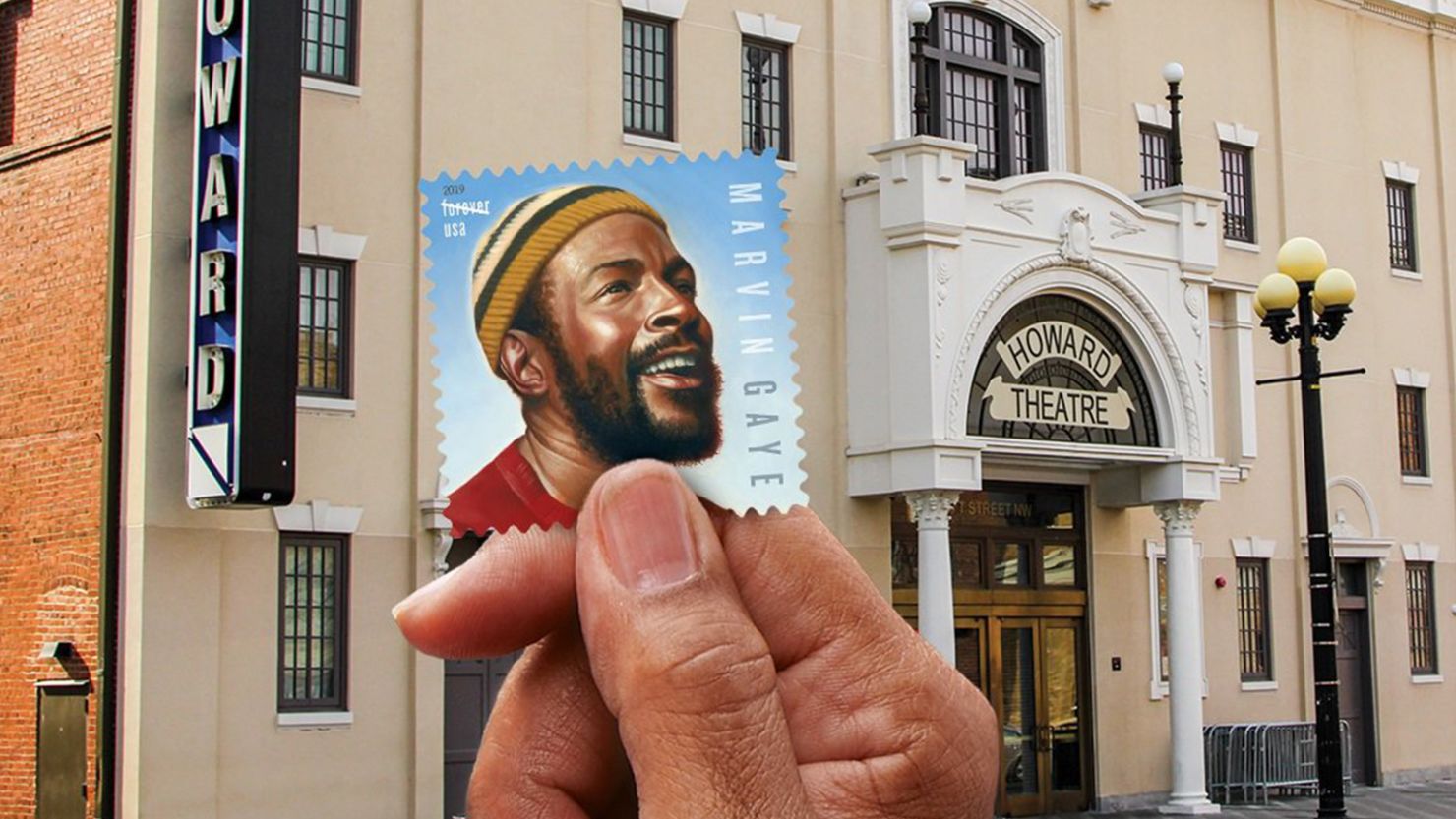Editor’s Note: Danté Stewart is writer, speaker and author of “Shoutin’ In The Fire: An American Epistle.” Named by Religion News Service as one of “Ten Up-And-Coming Faith Influencers,” his work has appeared in The New York Times, The Washington Post, ESPN’s The Undefeated, Sojourners, and more. The views expressed here are his own. Read more opinion on CNN.
At the beginning of this year, as I drove down the dark, winding country roads of rural South Carolina, I began to listen to Marvin Gaye’s classic “Ain’t No Mountain High.” My eyes passed an empty cotton field and an old, worn, red barn.

I hadn’t heard that song since I watched “Remember the Titans” years ago. Though I do remember last night, before I put Asa down to sleep and before I read a little in Alice Walker’s 1989 novel “The Temple of My Familiar,” my mind flashed to Marvin and Tammi Terrell standing side by side, singing.
“A true artist, the one whom God shows,” Alice Walker wrote, describing protagonist Arveyda’s closed eyes, his broken but present tune that suffused his guitar strings with the sound of terror and testimony, “he knew he dared not doubt the power of his song.” Memory and love linger and dance around this text as Marvin’s body danced around Tammi’s. In a multitude of voices, Walker rewrites history and our humanity, that beautiful, terrible and sacred story of how we got here.
Arveyda carries in his voice the painful weight of what he has chosen to forget. Yet, in the midst of it all, he sings. As did Marvin. As did Tammi. “His faith must be that the pain he brought to others and to himself,” Walker writes, “would not lead to destruction, but to transformation.” And it is this faith, in ourselves and in our ability to remain truthful and free, that is a sermon helping us find healing and wholeness in our survival.
In this image is something I have tried to remind myself of again and again: the everyday ordinary power of Blackness.
The conversation about Black life, Black art and Black History Month is too often flattened because people fail to look at our lives through our eyes. They fail to see the ways we move and dance and call out to and sing to one another. I have been thinking a lot about that failure and this month.
Let’s be clear: Black history is not about saving America or White people. Black history is about us. In a moment where we still live in what James Baldwin called in “The Fire Next Time” the “loveless world” – a moment still defined by banning Black books, exploiting Black creativity, stifling Black freedom, harming Black life – we need to remember who we are and why we tell Black stories.
Of course, there is no singular Black experience, no one way to see us or know us. But there is something distinctively Black about the way we take what we have and turn it Black. And even then, many people still fail to see the myriad of ways we create life and live beyond the limits of the White imagination.
We must remember: White people made Blackness a curse and a sin. We redefined Blackness as a world and a gift.
Black history is not simply asking, “How can I remember and learn about Black people?” It is all of us asking how we can love Black people by seeing them, hearing them and creating a world where Black people feel seen, inspired and protected.
There are those who seem to think our lives are just lessons, somehow reducing us to helping White people to “get it.” My mind cannot escape the simple fact that so many people ran to our books and our art or to the streets in 2020, believing that simply reading or marching would somehow magically change the White supremacist power structure so pervasive in our country without fundamental change in how we live together.
Just two years later, after all the anti-racist work and organizing, we are dealing once again with White backlash on one hand, and White exhaustion on the other. Some want to erase us. Others want to control us.
This misses the power of our living. We neither must be perfect or in performance to stay alive. We neither must be “exceptional” or “superhuman.” None of that is necessary. The power is that we are here – and to use Baldwin’s often-missed words at the end of “Letter From a Region in My Mind,” we “are indeed beautiful.”
On January 25, just two days, seven hours and 13 minutes after I received the news that my granddaddy, Jonny Rubin Albert, had gone on to rest with God and the ancestors, I sat in my favorite local coffee shop talking with one of my friends on FaceTime about Hanif Abdurraqib’s “A Little Devil in America: Notes in Praise of Black Performance.”
As the black coffee traveled down my throat, I was still confused by grief and I still felt the gaping hole that such news left in my stomach. Granddaddy would always have a profound saying from Socrates, or some sermonic reminder from Martin Luther King, Jr. or some folk wisdom like, “If you got a can and a plan, I’m your man.”
I laughed as I sipped. I took another sip. I laughed again.
“He was a good man, he always had something to give us,” I said to my friend on the screen. “I’m going to miss him,” I said. “He always would be dancing,” I said, showing him the video my brother posted earlier that morning of my granddaddy dancing to his favorite song, “The Thrill Is Gone.”
“Cotdamn grandaddy,” the caption reads in his familiar Southern lingo. And then: laugh emoji, laugh emoji, laugh emoji. And then: teary eye emoji, teary eye emoji, teary eye emoji.
The movements of his old, frail body, almost like the way Marvin motioned his arms heavenward, reminds me of one of Hanif’s lines speaking on grief, Black dancing and the freedom of being present and stumbling into movement that could only be describe as sacred: “It occurs to me now that this was the real joy of dancing: to enter a world unlike the one you find yourself burdened with, and move your body toward nothing but a prayer that time might slow down.” Hanif notices what we often miss. Ordinary Black movement is worthy of noticing, documenting and remembering.
And when I read that line, I walked into the bathroom and cried. I needed a moment, that moment again, to remember and to pause long enough to praise God that he had a full and long and spectacular life. Grief does that: you don’t know when or where it will hit you, but when it does, you feel it everywhere and everyway. And that too is like dancing: You pause long enough to rest and recover, but you get back on the dance floor a little lighter than when you left.
I’ve learned that talking about Blackness is about giving us words; setting our bodies free. It is about deep love. It is about speaking deeply to our pain and trauma, but also bringing out our complexity and beauty. Our lives are just about that: our lives. Our sometimes rage and sometimes resilience and sometimes remembering and sometimes resting and sometimes revolting and sometimes redefining is not “for” other people. It is for us. It is about the Black world – the world that we created and have made for ourselves.
It is the way we learn about, as Toni Morrison wrote in a 1974 essay about Black history, “The part of our lives that was spent neither on our knees nor hanging from trees…it is indeed an excellent dream.” A dream not bound to other’s limited imagination or inability to see. Others may not see us. But we do.
It is as normal and as powerful as Marvin looking into the eyes of Tammi and Tammi into the eyes of Marvin and my eyes looking at my granddaddy and Hanif writing on Black performance and Alice writing about the power of our song and me writing right now about how beautiful we are being alive.
We were not concerned about what White people thought in those moments.
We were too busy living.
And that living is not perfect. But it is ours.
And, as the old church folk would say, our living shall not be in vain.


